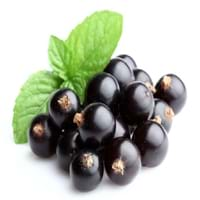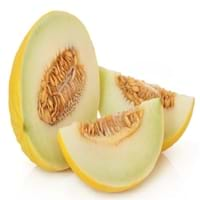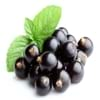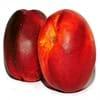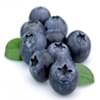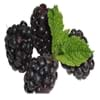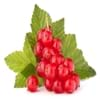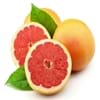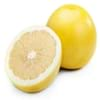Health Benefits
Arthritis treatment, Cures gastro-intestinal troubles, Diarrhea treatment, Gout treatment, Heart care, Kidney stone treatment, Liver health, Muscle pain relief, Treatment of alzheimer's disease
Body hydration, Cancer prevention, Gout treatment, Heart care, Treatment of skin Diseases
General Benefits
Anti oxidant properties, Anti-inflammatory properties, Boosts immune system, Cures fever, Eye care, Fights against infections, Improves blood circulation, Improves eye vision, Maintains healthy cholesterol level, Treatment of common cold
Body hydration, Controls blood pressure, Digestive aid, Eye care, Helps in weight loss, Improves eye vision, Maintains healthy cholesterol level, Strengthens bones
Skin Benefits
Anti-aging benefits, Brightens and lightens complexion, Skin cleansing, Treatment of dark spots, Treatment of skin diseases
Anti-aging benefits, Brightens and lightens complexion, Hydrates skin, Reduces wrinkles, Treatment of dark spots
Hair Benefits
Acts as moisturizer, Prevents hair loss, Promotes longer and healthier hair, Protects hair, Rejuvenates scalp, Remedy for split ends
Prevents hair loss, Promotes longer and healthier hair, Protects hair
Allergy Symptoms
Abdominal pains, Asthma, Conjunctivitis, Eczema, Itching, Nasal polyps, Runny nose, Skin rash, Swelling
Abdominal cramps, Breathing difficulty, Coughing, Diarrhea, Hives, Hoarseness, Itching in eyes, Itching of mouth, Itching sensation in throat, Nasal congestion, Nausea, Skin rash, Wheezing
Side Effects
Diarrhoea, Nausea, Vomiting, Might cause change of urine color
Allergic reaction
Best Time to Eat
Best if taken as a breakfast (or empty stomach), As a snack in the late afternoon, Don't consume at night and before bed, Eat the fresh ones, avoid mixing with any other foods, don't eat after meal., Morning time (before lunch)
As a snack in the late afternoon, Don't consume at night and before bed, Eat the fresh ones, avoid mixing with any other foods, don't eat after meal., Morning time (before lunch)
Vitamin B5 (Pantothenic Acid)
Vitamin B9 (Folic acid)
Not Available
Vitamin C (Ascorbic Acid)
Vitamin K (Phyllochinone)
Not Available
Lutein+Zeaxanthin
Not Available
Calories in Fresh Fruit with Peel
Not Available
Calories in Fresh Fruit without Peel
Not Available
Calories in Frozen Form
Not Available
Calories in Canned Form
Not Available
Not Available
Season
Summer
All seasons
Varieties
Ben Sarek, Ben Lomond, Ben Hope, Ben Connan, Ben Avon, Ben Gairn, Ben Dorain, Ben Hope, Ben Sarek, Ben Tirran, Big Ben, Ebony, Foxendown, Titania and Ben Alder
Green Flesh, Yellow Rind and Orange Flesh
Color
Black
Green, Yellow
Inside Color
Grey
Light Green
Origin
Asia, Europe
France
Grows on
Trees
Not Available
Soil Type
Sandy loam, Well-drained
Sandy loam, Well-drained
Climatic Conditions
Cold, Moist
Warm
Facts about
- The life of black currant plant is 20-30 years.
- Oil extracted from black currant seeds is used in production of skin care products.
- Black currant berries are major source of food for the birds.
- The average weight of honeydew melon is 6 pounds.
- 90% of a honeydew is water.
- In middle east countries, dried and roasted honeydew seeds are consumed as snacks.
- Honeydew melons can be 15-22 mm long.
Cocktails
Not Available
Yes
Top Producer
Russia
China
Other Countries
New Zealand, Poland, United Kingdom, United States of America
Brazil, Egypt, India, Iran, Mexico, Morocco, Spain, Turkey, United States of America
Top Importer
Not Available
Not Available
Top Exporter
Not Available
Not Available
Botanical Name
Ribes nigrum
Cucumis melo
Synonym
R. nigrum forma chlorocarpum or R. nigrum var. chlorocarpum or R. nigrum var. sibiricum or R. cyathiforme or R. olidum
Not Available
Subkingdom
Tracheobionta
Tracheobionta
Division
Magnoliophyta
Magnoliophyta
Class
Magnoliopsida
Magnoliopsida
Subclass
Rosidae
Dillenhidae
Order
Saxifragales
Cucurbitales
Family
Grossulariaceae
Cucurbitaceae
Species
R. nigrum
C. melo
Generic Group
Saxifrage
Gourd
Difference Between Blackcurrant and Honeydew
We might think that Blackcurrant and Honeydew are similar with respect to nutritional value and health benefits. But the nutrient content of both fruits is different. Blackcurrant and Honeydew Facts such as their taste, shape, color, and size are also distinct. The difference between Blackcurrant and Honeydew is explained here.
The amount of calories in 100 gm of fresh Blackcurrant and Honeydew with peel is 63.00 kcal and Not Available and the amount of calories without peel is Not Available and 36.00 kcal respectively. Thus, Blackcurrant and Honeydew belong to Low Calorie Fruits and Low Calorie Fruits category.These fruits might or might not differ with respect to their scientific classification. The order of Blackcurrant and Honeydew is Saxifragales and Cucurbitales respectively. Blackcurrant belongs to Grossulariaceae family and Honeydew belongs to Cucurbitaceae family. Blackcurrant belongs to Ribes genus of R. nigrum species and Honeydew belongs to Cucumis genus of C. melo species. Beings plants, both fruits belong to Plantae Kingdom.
